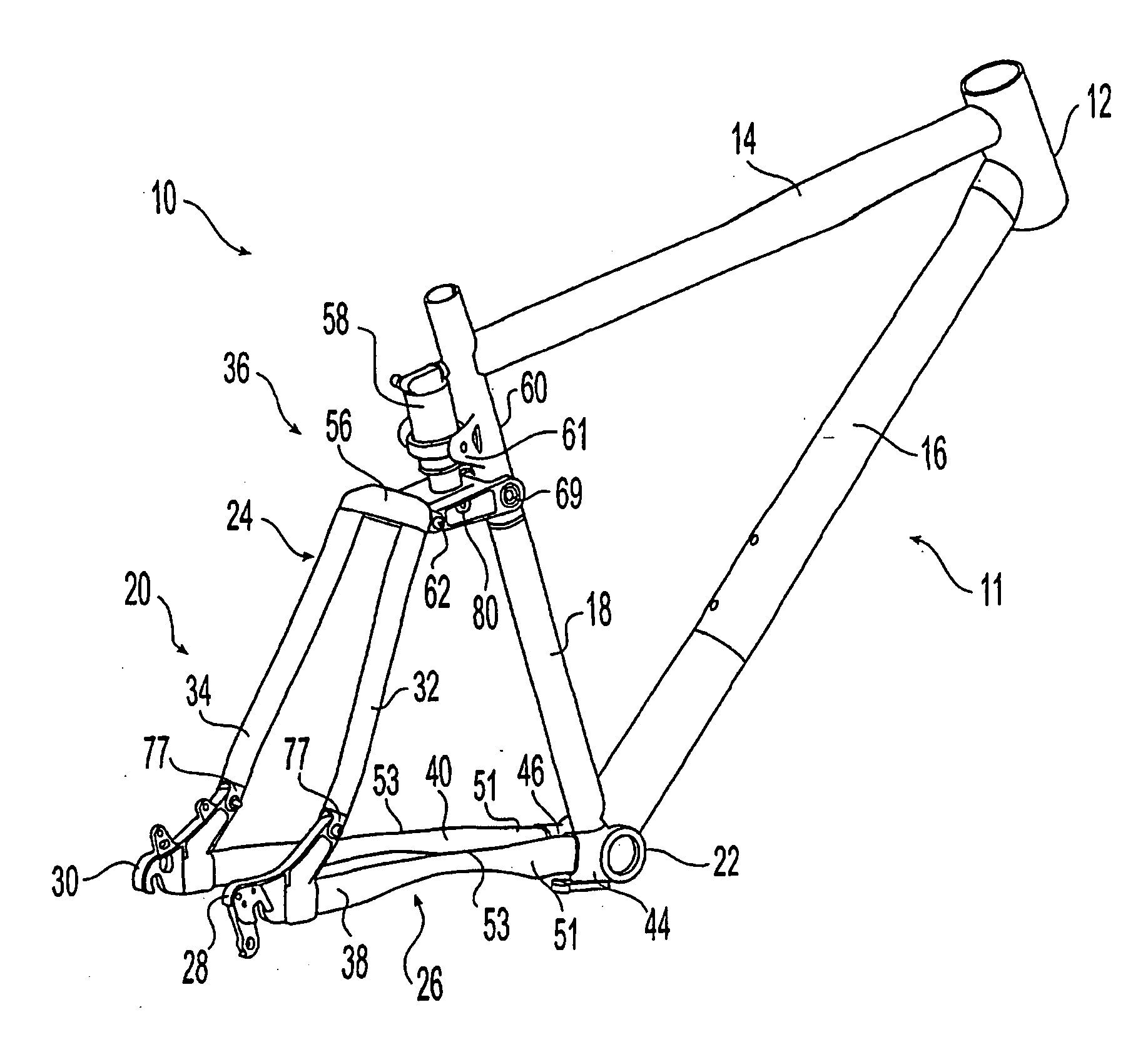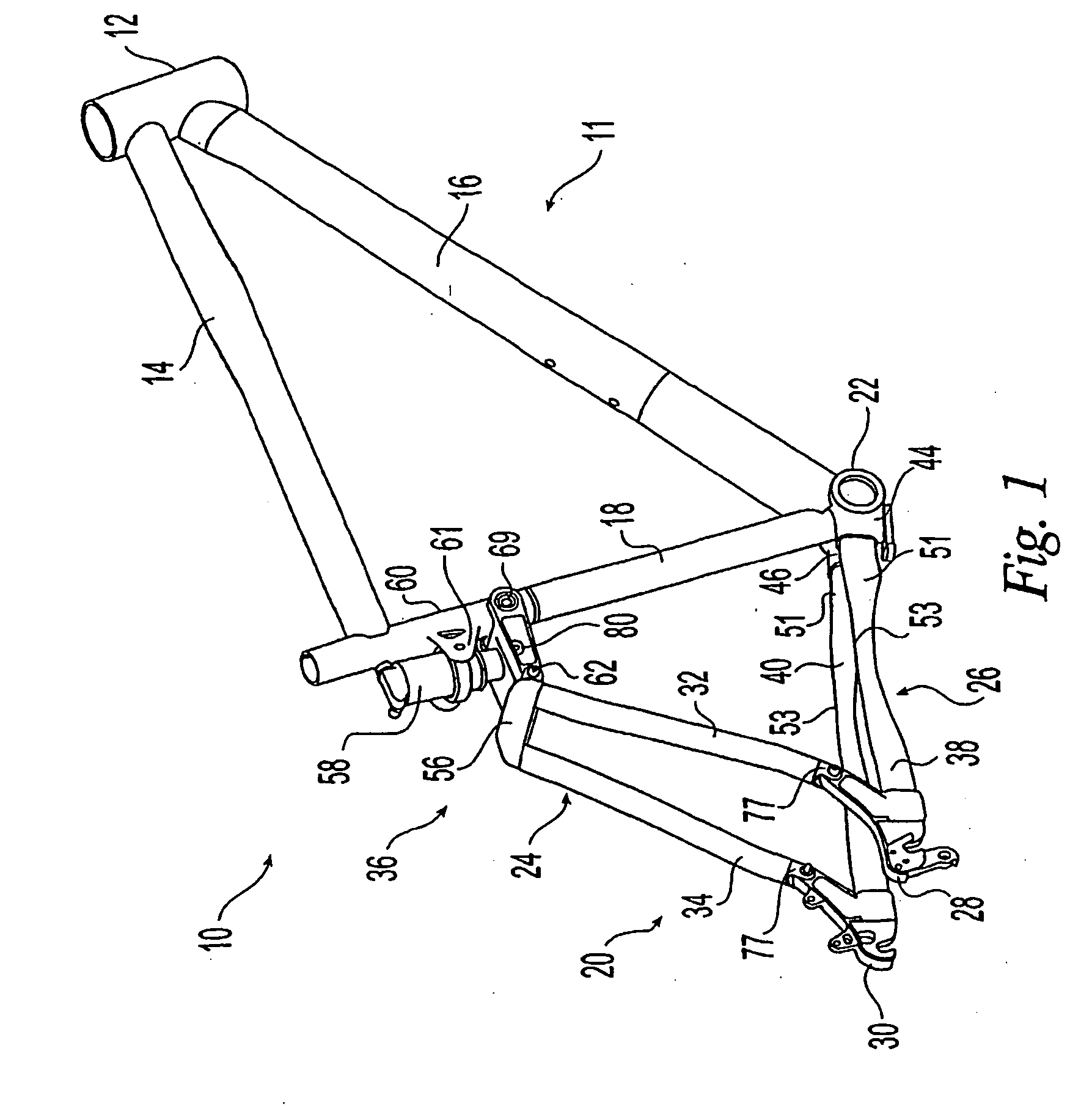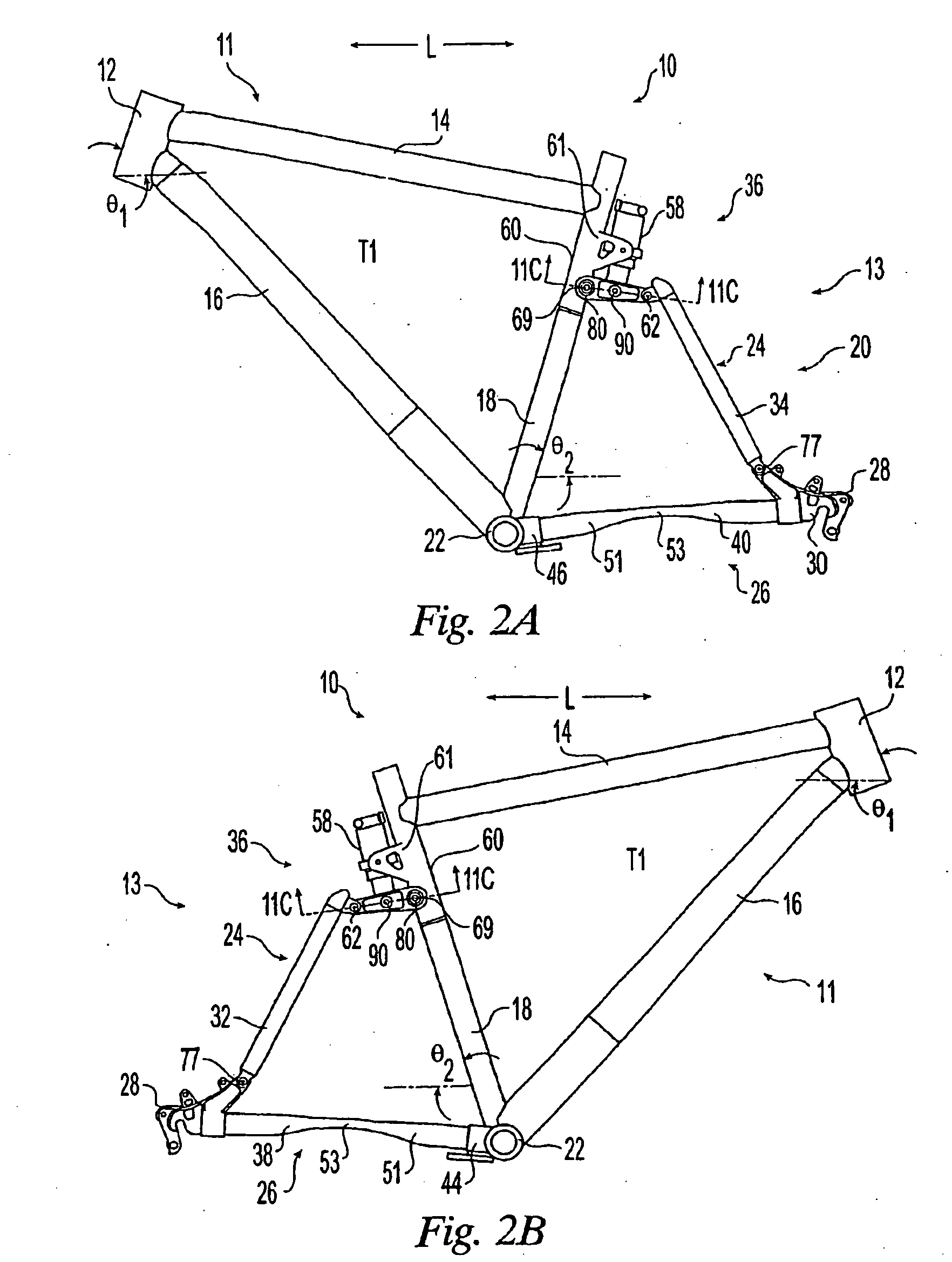Living hinge member and suspension
a hinge member and living technology, applied in the direction of friction roller based transmission, steering device, cycle equipment, etc., can solve the problems of large number of parts, mechanical complexity, unsatisfactory comfort and optimum performance of conventional rigid arrangement,
- Summary
- Abstract
- Description
- Claims
- Application Information
AI Technical Summary
Problems solved by technology
Method used
Image
Examples
second embodiment
[0086] In the second embodiment, to form the preform, first, one carbon tubular sleeve having a length preferably of about 18 inches is placed over a mandrel. Alternatively, a carbon sheet may be used such that the sheet is wrapped around the silicone bladder and then tacked in place by using a soldering iron or similar heating element to join the mating edges of the carbon sheet to form a first tubular layer. FIG. 11A shows a schematic of the first layer A around the silicone bladder S.
[0087] Next two uniglass sheets having a length of 7 inches are wrapped around the first layer at each end thereof and each sheet is placed 1.25″ from the center of the preform to form a second layer. This is done by first tracking one edge of each sheet to the carbon layer. Second, the uniglass sheet is wrapped around the layer and tacked again to join the mating ends of the uniglass sheet together to form the second layer. FIG. 11B shows a schematic of the first layer A and the second layer B aroun...
first embodiment
[0098] For example, with the first embodiment, an aluminum, hollow, oval tube having a length of approximately 1.75 inches that is about 0.7 inches tall, about 0.5 inches wide, and about 0.03 inches thick may be bonded into the chain stay using acrylic adhesive. One acrylic adhesive that may be used is Plexus Brand MA310. Other bonding materials can be used that are known in the art. The aluminum reinforcement tube can be placed in the chain stay closer to the bottom bracket 22 opposite the dropouts 28,30 or alternatively placed closer to the dropouts 28,30. Furthermore, the chain stay can be reinforced near the bottom bracket and the near the dropouts. Other dimensions, materials or locations for the reinforcement can be used and are not limited to the examples discussed. For example, the reinforcement may extend the entire length of the tube or only partially along the length. It may be positioned at both ends, or at a number of locations along the length. Types of reinforcement t...
PUM
 Login to View More
Login to View More Abstract
Description
Claims
Application Information
 Login to View More
Login to View More - R&D
- Intellectual Property
- Life Sciences
- Materials
- Tech Scout
- Unparalleled Data Quality
- Higher Quality Content
- 60% Fewer Hallucinations
Browse by: Latest US Patents, China's latest patents, Technical Efficacy Thesaurus, Application Domain, Technology Topic, Popular Technical Reports.
© 2025 PatSnap. All rights reserved.Legal|Privacy policy|Modern Slavery Act Transparency Statement|Sitemap|About US| Contact US: help@patsnap.com



